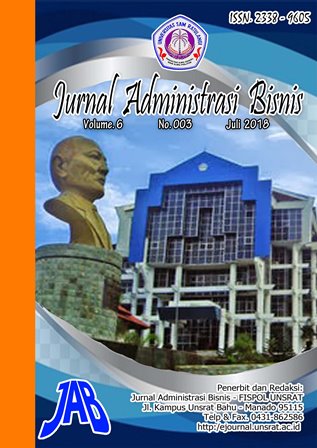Analisis Tingkat Kesehatan Bank Dengan Menggunakan Metode CAMEL (Capital, Asset Quality, Management, Earnings, Liquidity) Pada PT.Bank Sulut-Go
DOI:
https://doi.org/10.35797/jab.v6.i003.%25pAbstract
The Purpose of the Study statement helps the subject assess the importance of the study with data issues and the measurement, to analyze the health of the Bank at PT. Bank SulutGo using CAMEL method. The results of this study may be able to provide benefits for various parties related to this research, that is for the company as a consideration in decision-making and policy that will be done for the sustainability of the company's business. And for the community as the representative of  the health of PT. Bank SulutGo, so that the public can have consideration to choose the bank institution. This research uses descriptive analysis technique, that is explaining the health level of the bank by using CAMEL method in which some aspects of Capital increase the ratio of CAR (Capital Adequacy Ratio), Asset Quality underlying KAP (Productivity Asset Quality) ratio, Management based on NPM ratio (Net Profit Margin), Profit resulting ROA (Return On Asset) and BOPO (Operating Income Operating Cost) and Liquidity based on LDR (Loan to Deposit Ratio) ratio. The results of this study indicate that the calculation the health level of the bank for the last 3 years (2015 to 2017) at PT. Bank SulutGo is on the predicate Simply Healthy. However, a statement for this research, PT. Bank SulutGo is in a stagnant position or did not experience a breakthrough. People who look for 3 consecutive years in 2015-2017 have the same results and only on the predicate Simply Healthy.
Keywords: CAMEL, Bank, Health of the bank



